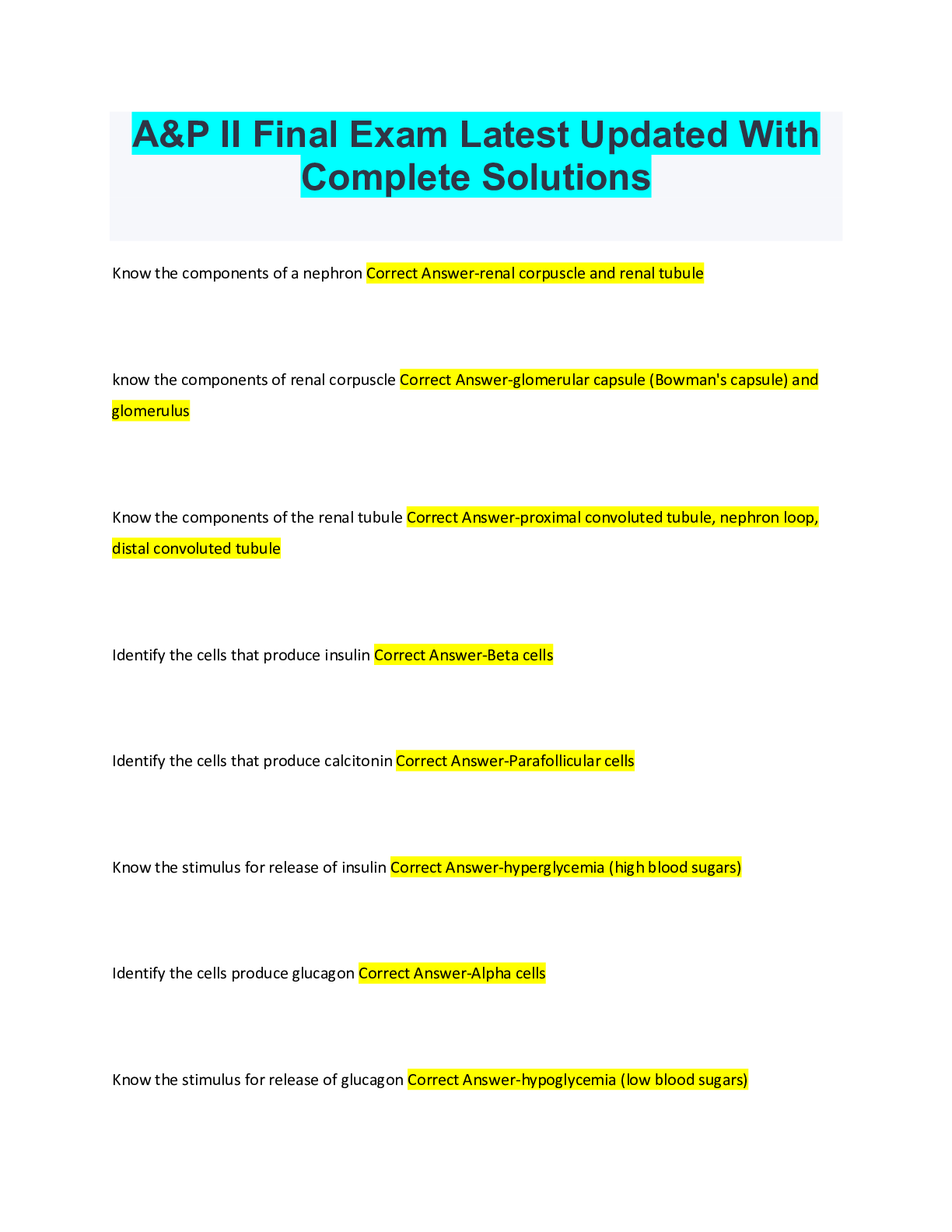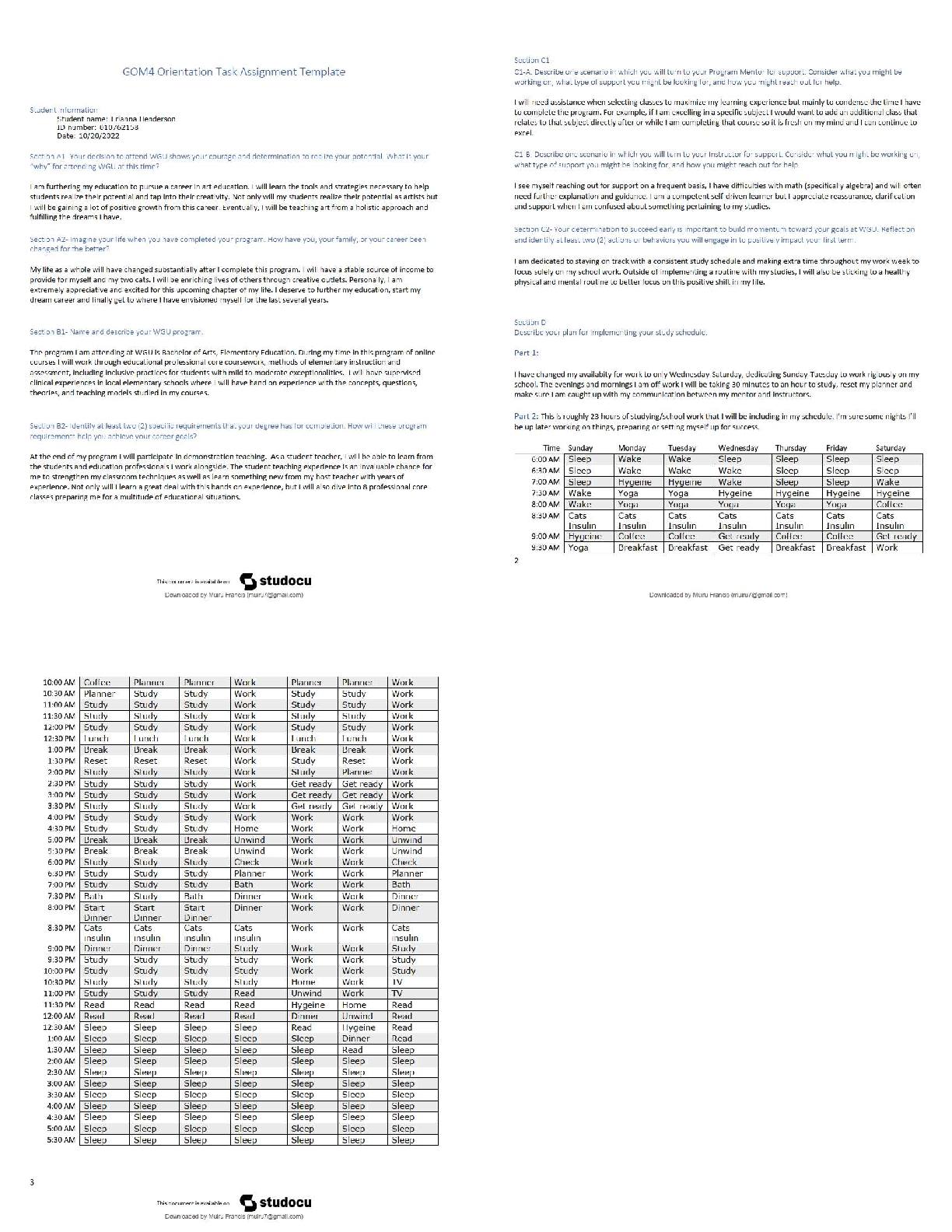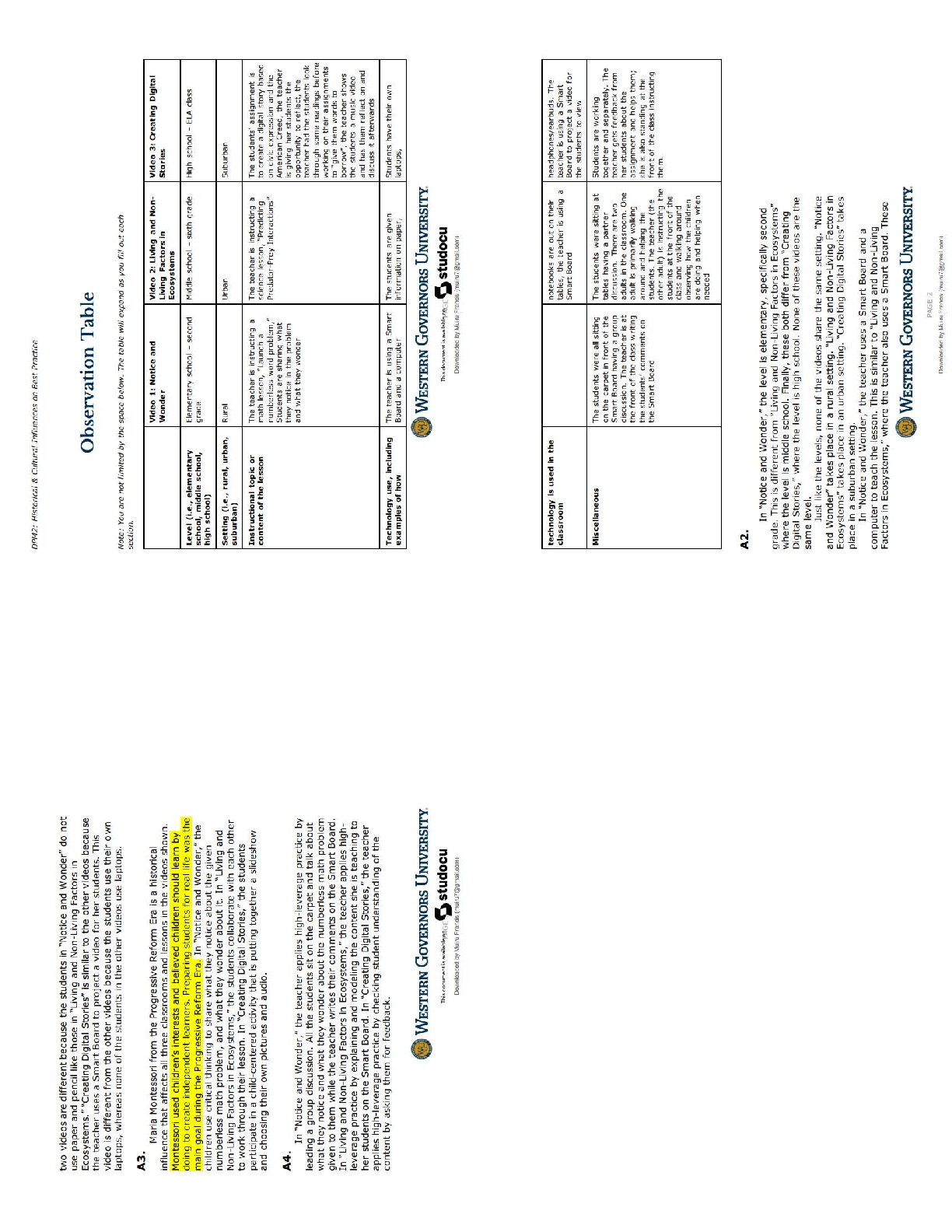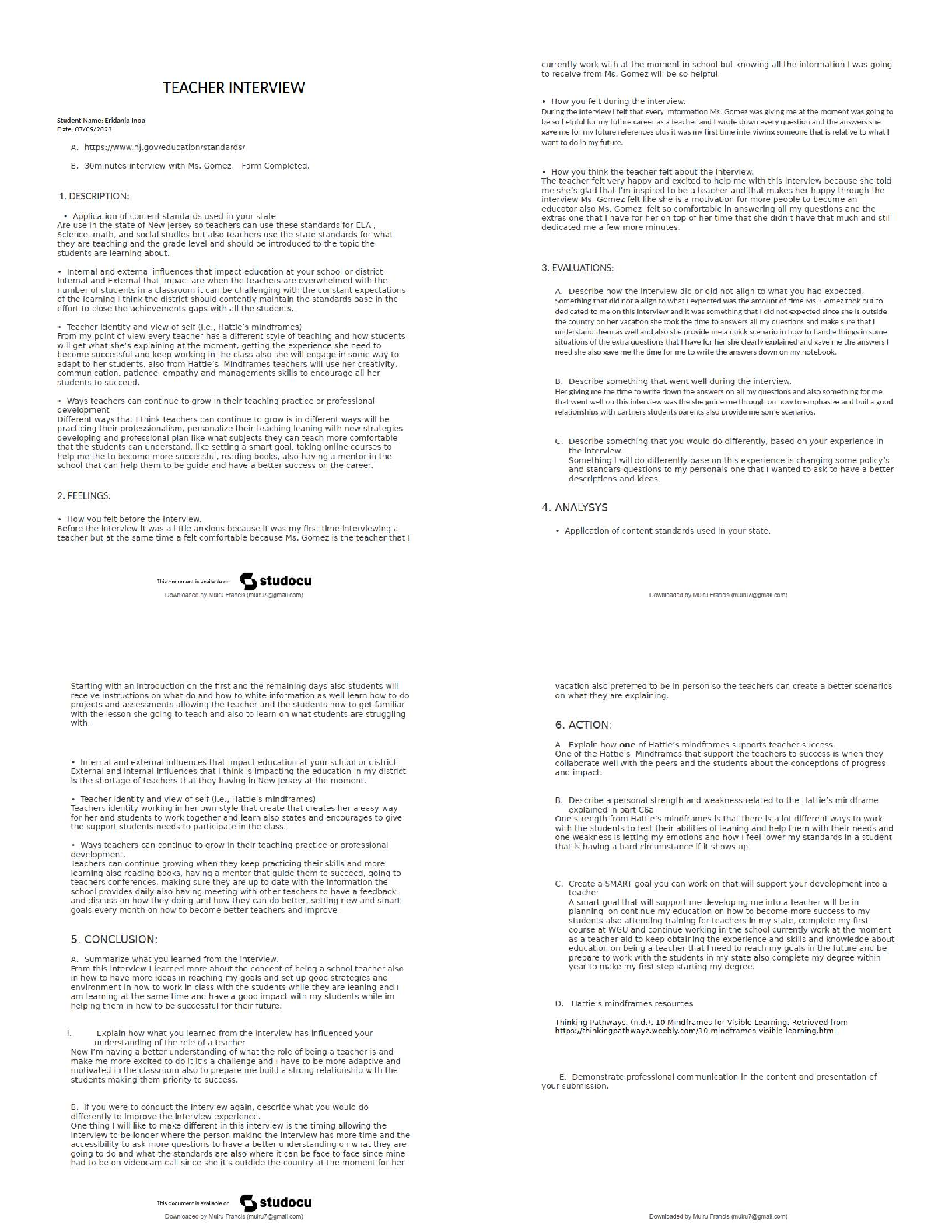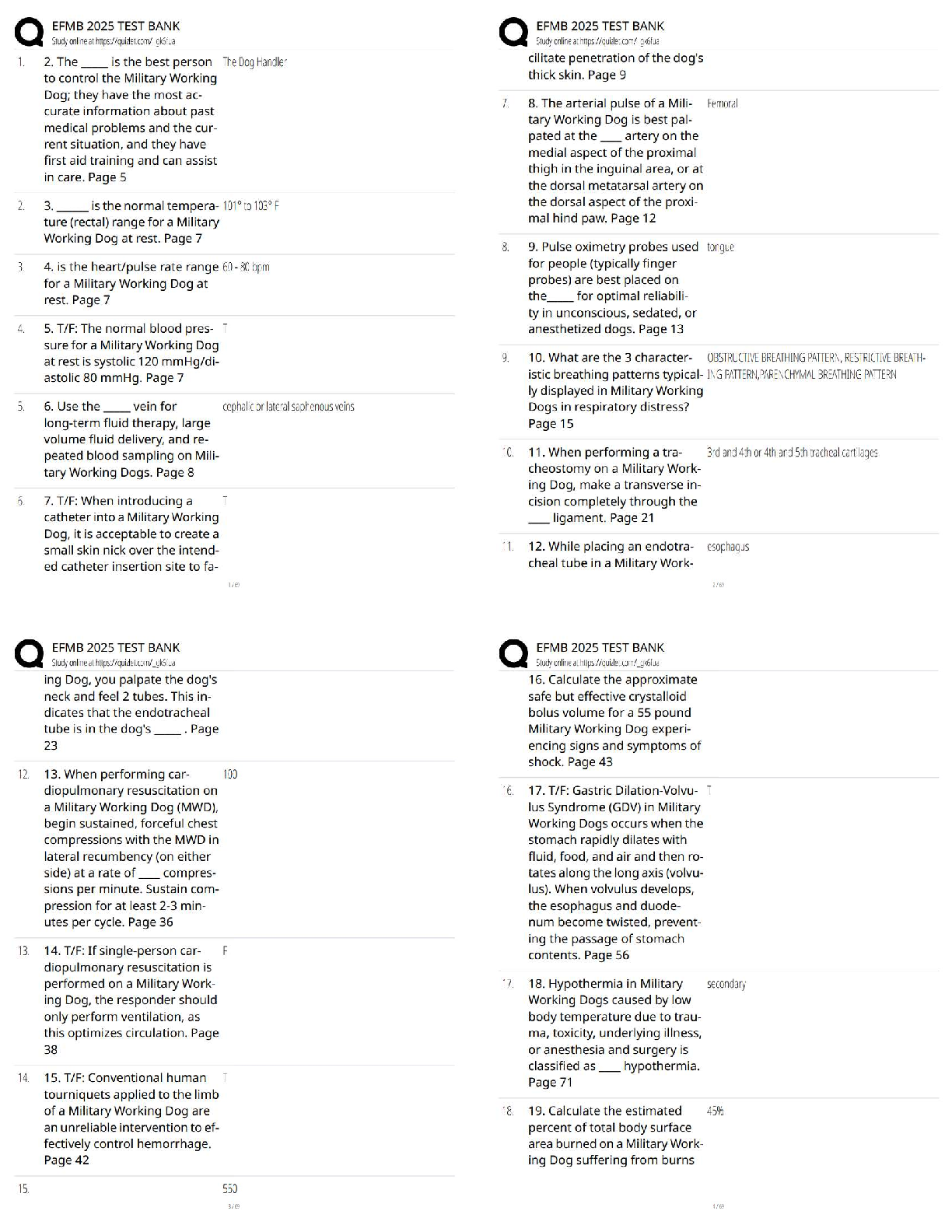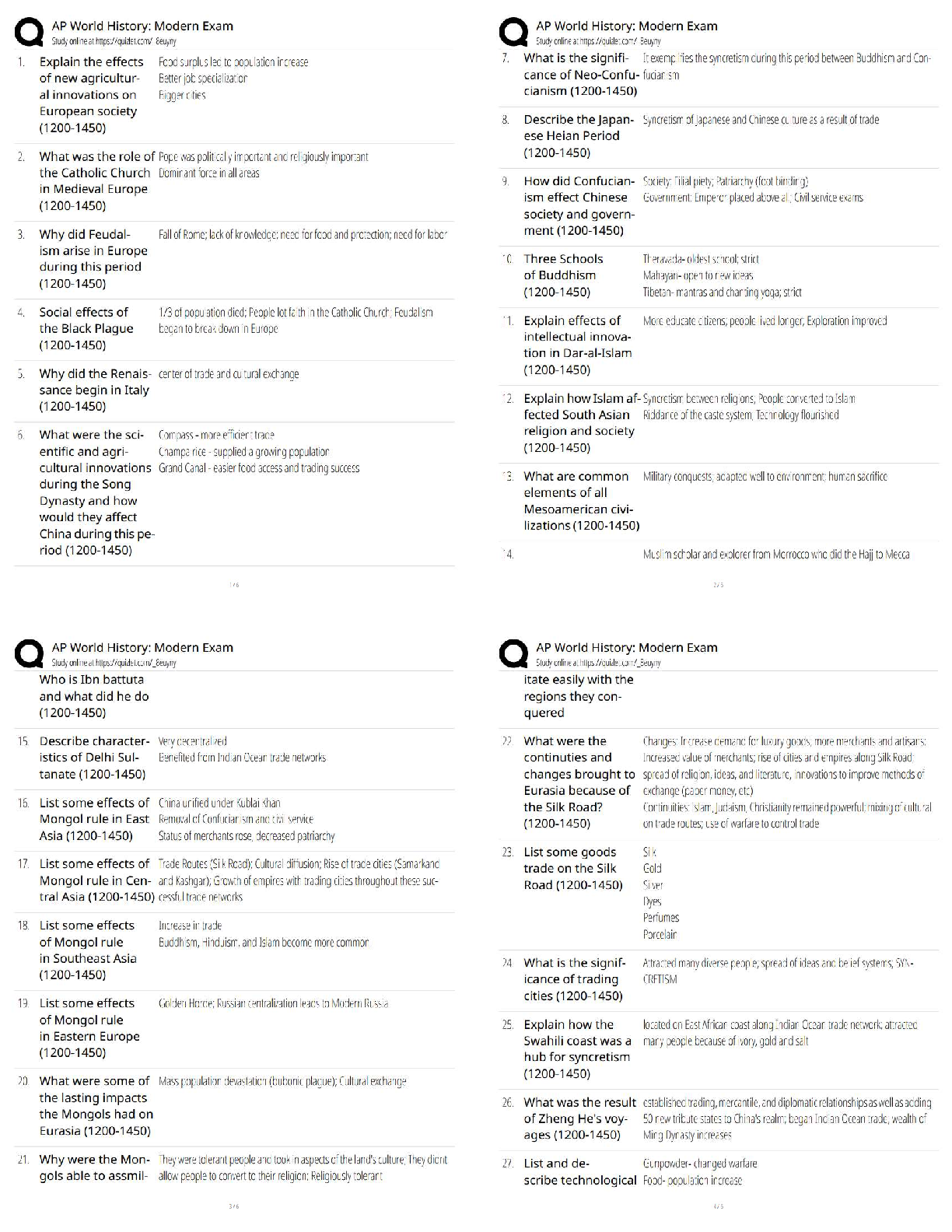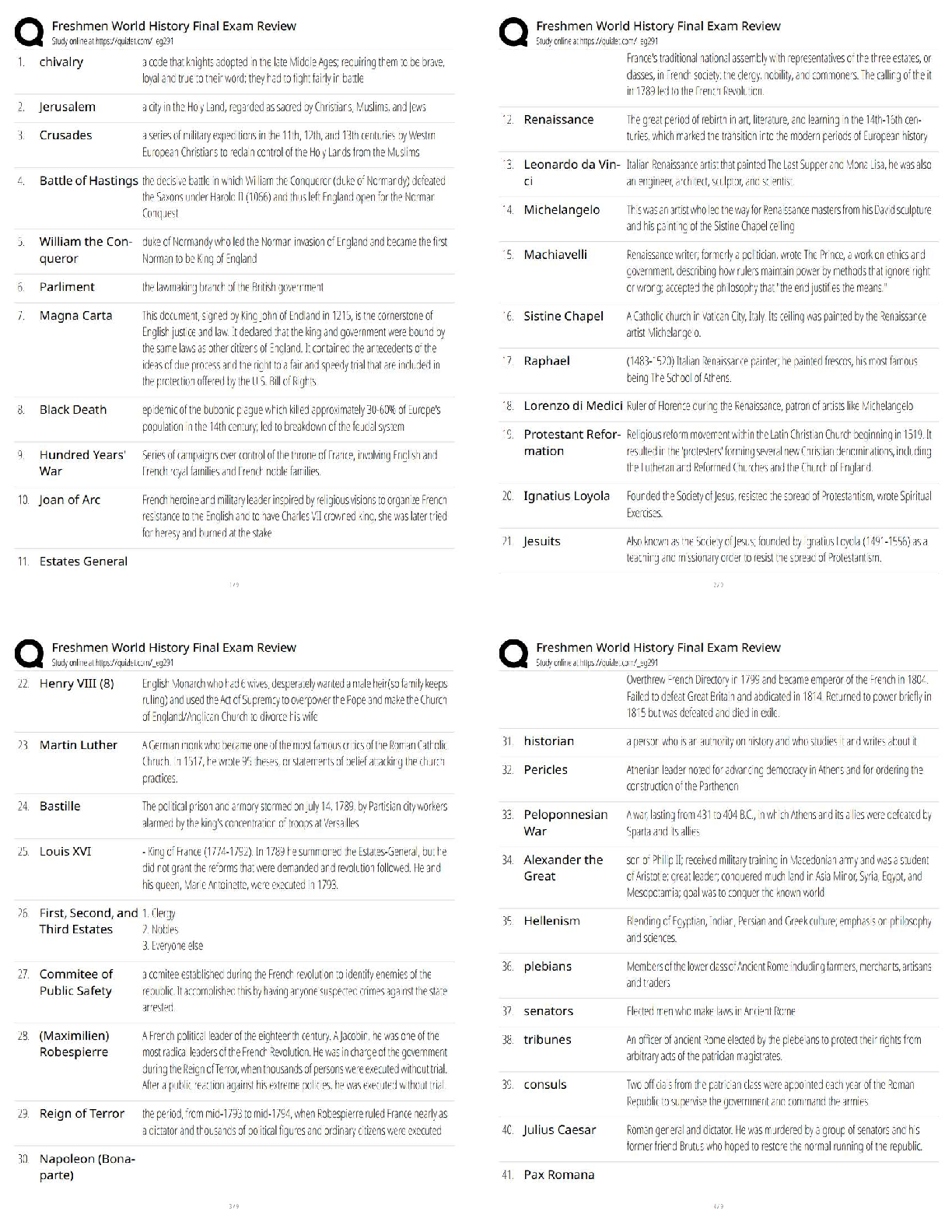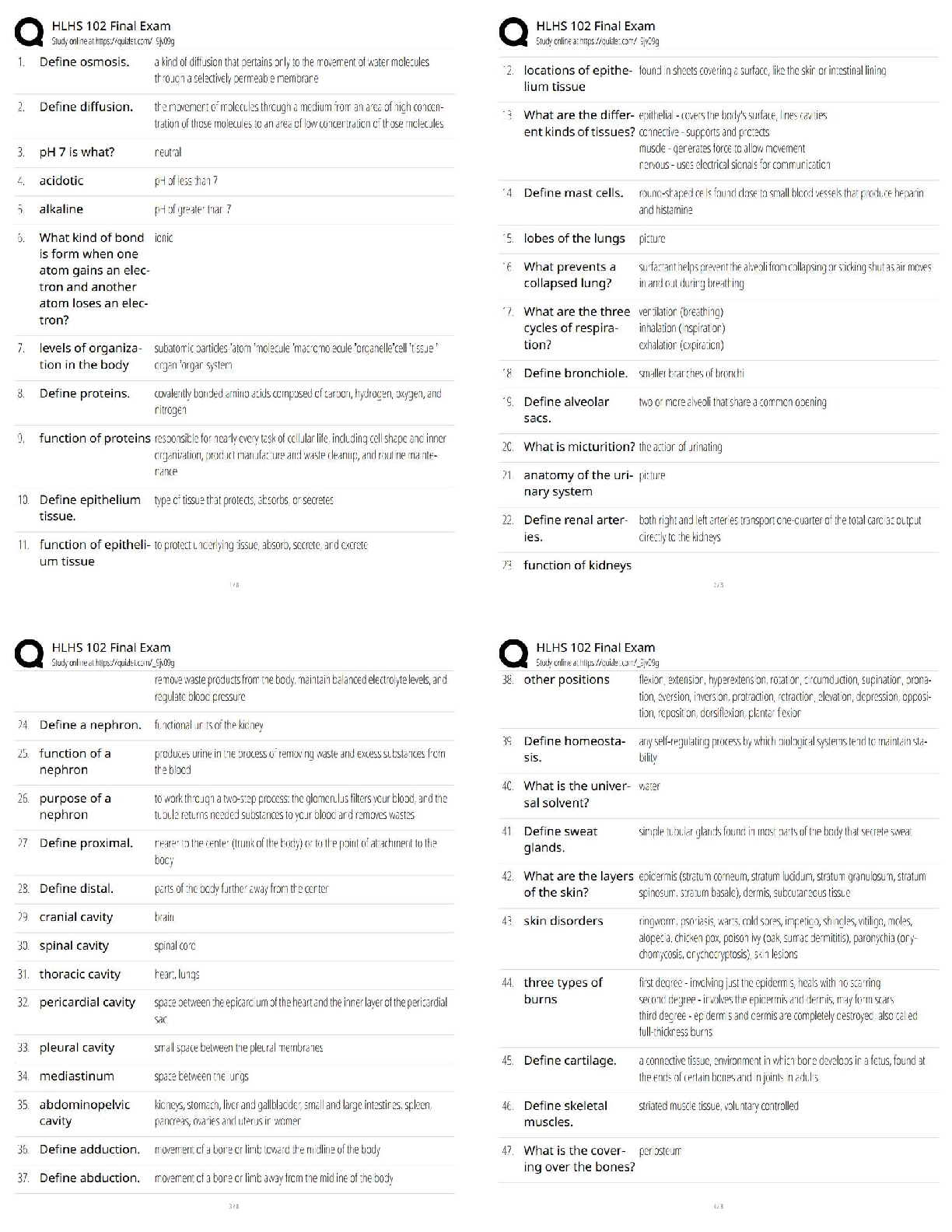A&P II Final Exam Latest Updated With Complete Solutions
Document Content and Description Below
A&P II Final Exam Latest Updated With
Complete Solutions
Know the components of a nephron Correct Answer-renal corpuscle and renal tubule
know the components of renal corpuscle Correct Answer-glome
...
rular capsule (Bowman's capsule) and
glomerulus
Know the components of the renal tubule Correct Answer-proximal convoluted tubule, nephron loop,
distal convoluted tubule
Identify the cells that produce insulin Correct Answer-Beta cells
Identify the cells that produce calcitonin Correct Answer-Parafollicular cells
Know the stimulus for release of insulin Correct Answer-hyperglycemia (high blood sugars)
Identify the cells produce glucagon Correct Answer-Alpha cells
Know the stimulus for release of glucagon Correct Answer-hypoglycemia (low blood sugars)Identify the enzyme that is involved in the pathways of external and internal respiration Correct Answercarbonic anhydrase
Identify the methods of carbon dioxide transport within blood. Correct Answer-dissolved carbon
dioxide, carboxyhemoglobin, bicarbonate ions.
Identify the methods of oxygen transport within blood Correct Answer-dissolved oxygen,
oxyhemoglobin
define hypoxia Correct Answer-low oxygen levels
Identify a potential cause of an elevated basophil count Correct Answer-start of allergic reaction
Identify the structure that fails to function properly when a person chokes Correct Answer-epiglottis
Identify the structure that fails to function properly during the clinical condition of gastroesophageal
reflux disease (GERD) Correct Answer-lower espohageal sphincter
Identify the correct order of the components of the digestive/GI tract from the beginning to the end
Correct Answer-mouth -> pharynx -> esophagus -> stomach -> small intestine -> large intestine (colon) ->
colonIdentify the components of the small intestine Correct Answer-duodenum, jejunum, ileum
Identify the sections of the stomach Correct Answer-cardia, fundus, body, pylorus
Identify the normal pH range of blood Correct Answer-7.35-7.45
Identify the element that allows hemoglobin to bind oxygen Correct Answer-iron
Identify factors that can change or alter stroke volume Correct Answer-preload, contractility, afterload
Identify the formed elements found in blood Correct Answer-RBC, WBC, platelets
Be able to determine a person's ABO blood type based on the presence of the ABO antibodies in that
person's blood Correct Answer-Type A blood- B antibodies
Type B blood- A antibodies
Type AB blood- NO antibodies
Type O- A and B antibodiesIdentify common wastes products found in urine Correct Answer-Nitrogenous wastes (urea, ammonia,
uric acid, creatinine, urobilin)
Identify components of plasma Correct Answer-Water
Plasma proteins: Albumin, Globulins, Fibrinogen
Other solutes: Nutrients (glucose, amino acids), Gases (oxygen, carbon dioxide), Electrolytes (any ions),
Regulatory substances (hormones, vitamins), Waste products (urea, ammonia, creatinine)
Identify the main components of a red blood cells Correct Answer-"Bag of hemoglobin" cell membrane,
cytosol, hemoglobin, some enzymes
Identify the components of the cardiac conduction system. List the components in the correct order that
a cardiac action potential would propagate through them. Correct Answer-SA node -> AV node - AV
bundle of HIS -> L/R bundle branch -> Purkinje fibers
Identify the enzyme responsible for producing cAMP Correct Answer-Adenylate cyclase
Identify the enzyme responsible for breaking down cAMP Correct Answer-phosphodiestrage
Identify the reason why heart valves open and close Correct Answer-pressure changesIdentify the vessel that is main venous drainage of the heart Correct Answer-coronary sinus
Identify the vessel that is the main arterial supply to the the left ventricle Correct Answer-Anterior
interventricular branch
Identify the type of epithelium found in the respiratory membrane Correct Answer-Ciliated
pseudostratified columnar epithelium
Identify the function of interferon Correct Answer-Inhibit replication of viruses
a. what cells does it contain? Correct Answer-acini and pancreatic islets
b. is it endocrine in function? Correct Answer-control blood sugars
c. is it exocrine in function? Correct Answer-excrete digestive enzymes
Identify the chemicals involved in the digestion of fats/ triglycerides Correct Answer-bile (from live)
lipase (from pancreas) gastric lipase (stomach)
Identify the pacemaker of the heart Correct Answer-SA nodeIdentify the functions of the liver. Correct Answer-Produce bile; carbohydrates, lipid, and protein
metabolism; process drugs and hormones; Excretrion of bilirubin; synthesis of bile and salts; storage of
vitamins and minerals; Phagocytosis; Activation of Vitamin D
Filtration of blood, produce clotting factors
Identify the cells that produce acid within the wall of the stomach Correct Answer-parietal cells
Identify a potential cause of an elevated lymphocyte count Correct Answer-viral infection
Know the components of the EKG and what those components represents Correct Answer-P wave- atrial
depolarization
QRS complex- ventricular depolarization
T wave- ventricular repolarization
P-R interval- contraction of the ventricles
S-T segment- ventricles fully depolarized
Q-T interval- complete ventricular depolarization and then repolarization
Know the function of surfactant Correct Answer-causes low surface tensionIdentify the materials that should not be filtered by the glomerulus Correct Answer-RBC, WBC, plasma
proteins, platelets
Describe the symptoms of the clinical condition myocardial infarction Correct Answer-dead tissue in
heart, anoxia (no oxygen)
Identify the location of renin production Correct Answer-kidney
Know the 3 ways in which the surface area of the small intestine is increased Correct Answer-circular
folds, villi, microvilla
Identify the cause of jaundice Correct Answer-hyperbilirubin- high bilirubin in blood
Identify the element that must be present in order to make thyroid hormones Correct Answer-Iodine
Identify the correct flow pattern for blood as it moves through the 5 major categories of blood vessels.
Correct Answer-artery -> arteriole -> capillaries -> venule -> v
[Show More]
Last updated: 3 years ago
Preview 1 out of 16 pages
.png)

